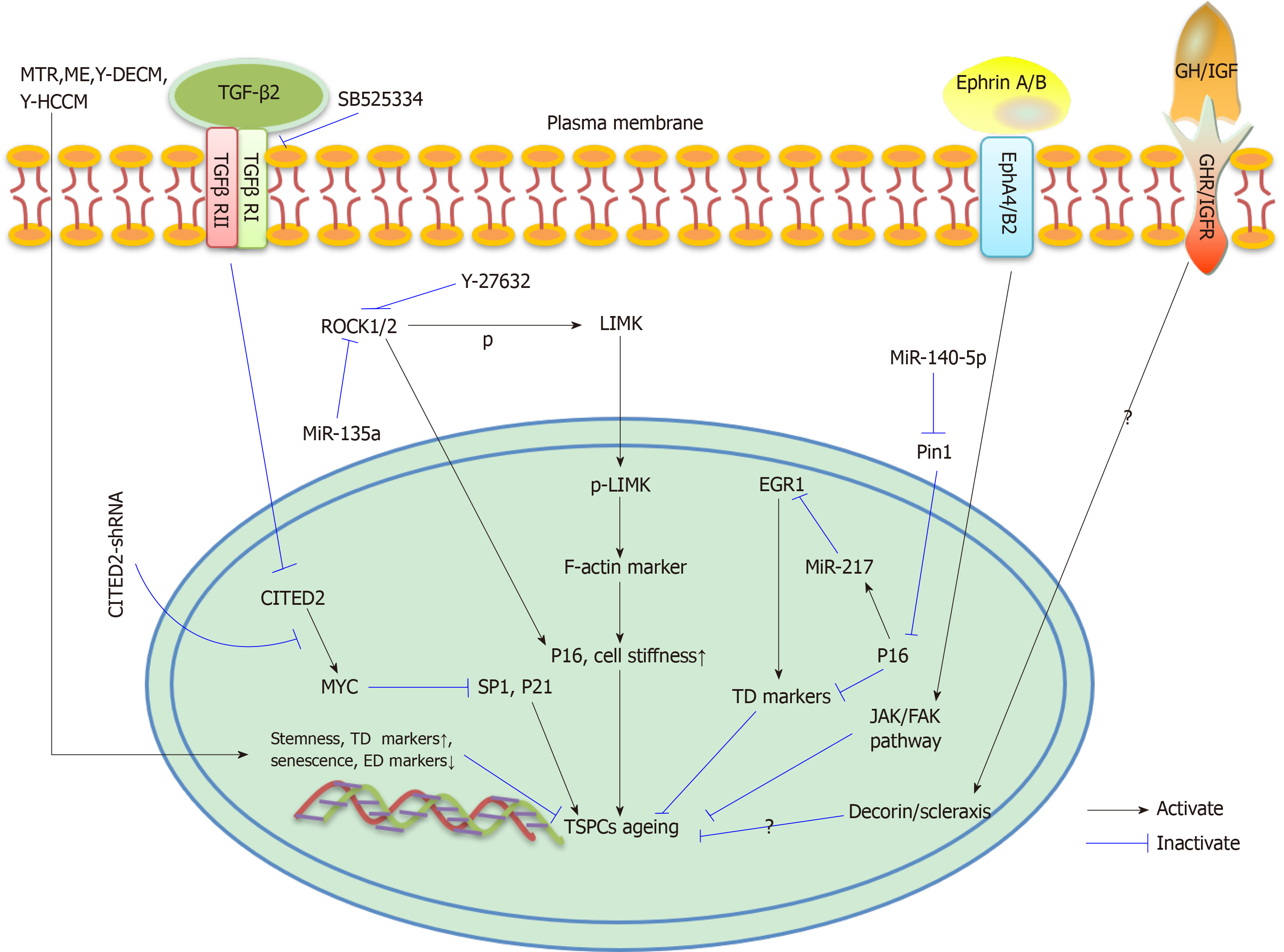Copyright
©The Author(s) 2019.
World J Stem Cells. Sep 26, 2019; 11(9): 677-692
Published online Sep 26, 2019. doi: 10.4252/wjsc.v11.i9.677
Published online Sep 26, 2019. doi: 10.4252/wjsc.v11.i9.677
Figure 1 Mechanisms involved in the tendon stem/progenitor cell ageing process and strategies aimed to rejuvenate the impaired features in aged cells.
TGFβ2 promotes the expression of CITED2. CITED2 up-regulates the expression of MYC, which inhibits the expression of SP1 and P21, revealing TGFβ2-CITED2-MYC-SP1/P21 pathway medicates cell senescence. And this pathway is delayed with the intervention of SB525334, which targets TGF-β2. Moreover, ROCK1/2 plays an important role in accelerating TSPC senescence and stiffness that can be delayed by the inhibition of Y-27632 on ROCK1/2 and miR-135a on ROCK1. MiR-140-5p reduces the expression of pin1 that downregulates the expression of P16 and ultimately delays TSPCs ageing. P16-miR-217-EGR1 pathway negatively modulates the cell tenogenic differentiation and senescence process. JAK/FAK pathways are involved in the modulation of Eprin A/B and EphA4 and EphB2 by affecting cell self-renew, migration and actin dynamics. GH/IGF-I pathway may participate in TSPCs ageing process by increasing the expression of decorin and scleraxis, resulting in delaying TSPCs ageing. Additionally, there are many cell external environment conditions, such as moderate treadmill running, moderate exercise, young decellularized extracellular matrix and young hypoxic-conditioned culture medium, can rejuvenate age-related alterations in aged-TSPCs. TD: Tenogenic differentiation; ED: Erroneous differentiation; MYC: Myelocytomatosis viral oncogene homolog; ROCK: Rho associated coiled-coil forming protein kinase; TGF-β2: Transforming growth factor-β2; TSPCs: Tendon stem/progenitor cells; IGF: Insulin-like growth factor; Pin1: Peptidyl-prolylcis-transiso merase NIMA-interacting1; miR: miRNA; CITED2: cAMP-responsive element-binding protein/p300-interacting transactivator with ED-rich tail 2; FAK: Focal adhesion kinase; P16/21: Passage 16/21.
- Citation: Dai GC, Li YJ, Chen MH, Lu PP, Rui YF. Tendon stem/progenitor cell ageing: Modulation and rejuvenation. World J Stem Cells 2019; 11(9): 677-692
- URL: https://www.wjgnet.com/1948-0210/full/v11/i9/677.htm
- DOI: https://dx.doi.org/10.4252/wjsc.v11.i9.677









